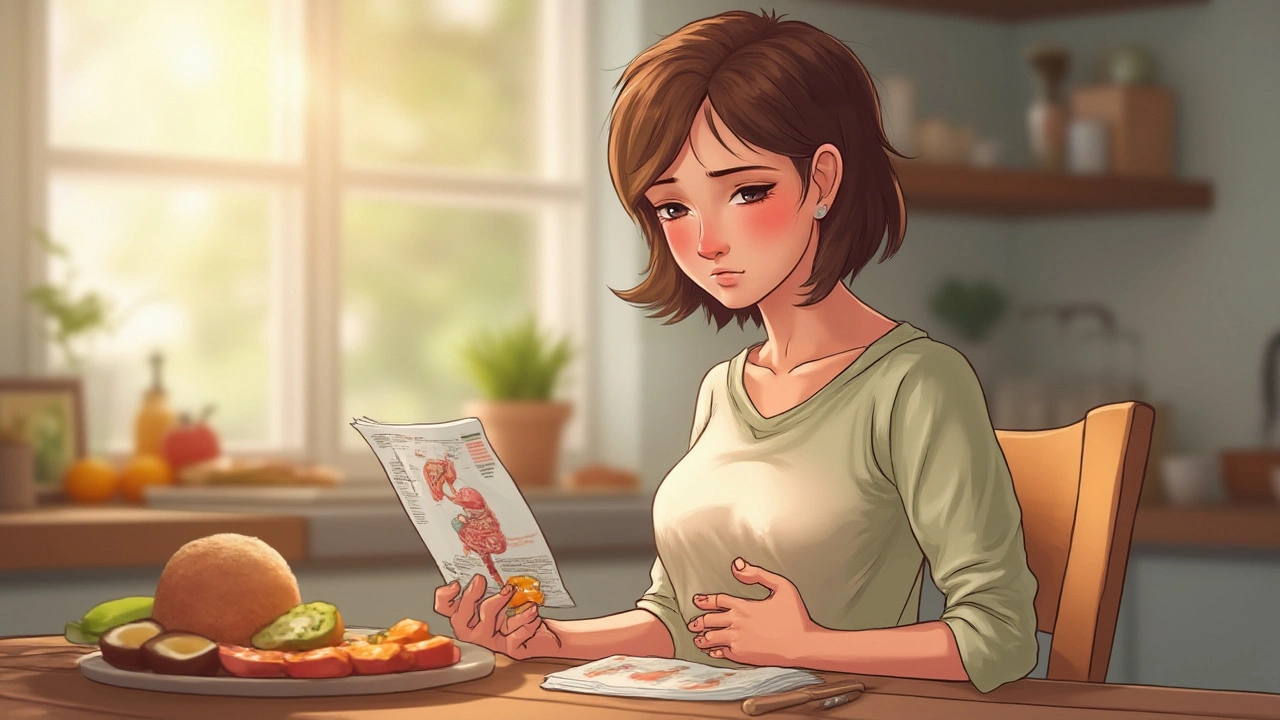Gallstones – What They Are and How to Deal With Them
If you’ve felt sudden pain in your upper right belly after a big meal, you might be wondering if gallstones are to blame. Gallstones are hard particles that form in the gallbladder, the small sac that stores bile. When they block a bile duct, you get sharp pain, nausea, and sometimes fever. Knowing the basics can help you catch them early and avoid complications.
Why Gallstones Form
The most common reason is an imbalance in the chemicals that make up bile. Too much cholesterol or bilirubin, or not enough bile salts, can cause tiny crystals to stick together and grow into stones. Risk factors are easy to spot: being overweight, having a high‑fat diet, rapid weight loss, diabetes, or a family history of gallstones. Women, especially those who have had multiple pregnancies, are also more prone.
Even if you’re fit, certain medical conditions can raise your risk. Liver disease, Crohn’s disease, and certain blood disorders change how your body processes cholesterol. Some medicines, like hormone replacement therapy or birth control pills, can also tip the balance toward stone formation.
Treating and Preventing Gallstones
When a stone blocks a duct, doctors usually confirm it with an ultrasound or a CT scan. If the pain is mild and the stones are small, they may recommend a watch‑and‑wait approach. Many stones pass on their own, but you’ll need to stay hydrated and avoid fatty meals during that time.
If symptoms are severe or the stone stays lodged, treatment options include medication that dissolves cholesterol stones or a minimally invasive procedure called endoscopic retrograde cholangiopancreatography (ERCP). In cases where the gallbladder is repeatedly inflamed, removal of the organ—called a cholecystectomy—is the standard solution. Laparoscopic surgery is common and usually lets patients go home within a day or two.
Preventing new stones is mostly about lifestyle tweaks. Aim for a steady, balanced diet low in saturated fats and high in fiber—think fruits, veggies, whole grains, and lean proteins. Regular physical activity helps keep weight in check, which reduces the cholesterol load on your bile. If you’re planning a rapid weight‑loss program, talk to a doctor first; a gradual approach lowers stone risk.
Stay hydrated. Drinking enough water keeps bile fluid, making it harder for crystals to stick together. A good rule of thumb is about eight glasses a day, but increase that if you’re active or live in a hot climate.
Finally, keep an eye on the warning signs. Persistent pain after meals, jaundice (yellow skin or eyes), fever, or dark urine should prompt a doctor visit right away. Early detection can mean a simple medication course instead of surgery.
Gallstones can be uncomfortable, but with the right knowledge you can spot them early, get effective treatment, and adopt habits that lower the chance of them coming back. Keep your diet balanced, stay active, and don’t ignore the pain—your gallbladder will thank you.
Discover why people with celiac disease face higher gallstone risks, what symptoms to look for, and how to manage both conditions confidently.

